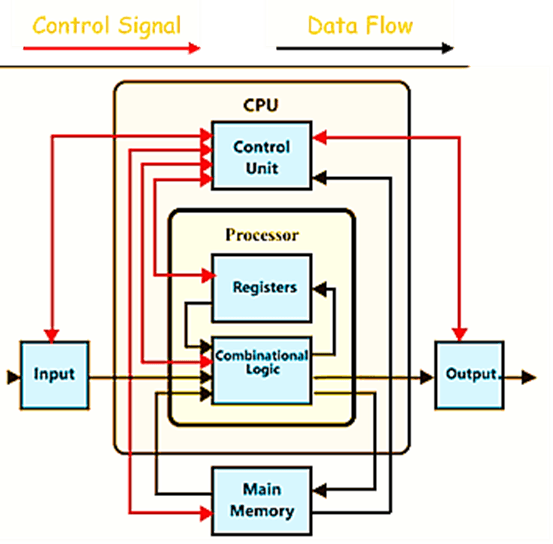For starters, to define and describe the concept of a system is important. The reason is that the theory of systems helps us understand;
- “what is happening around us (like weather or machines)”
- “what is happening inside us (like thoughts or organs)”
Table of Contents
Introduction
In a nutshell, a system is comprised of different components. For instance, a car has multiple parts like the engine, power transmission mechanism, wheels, brakes, etc. Each part of the car has a certain job to perform. However, when all parts work together, the car moves.
What is a System?
A system is essentially a collection of components that work together to achieve a goal.
Nature of Systems
Systems can be of any form;
- physical (like a car)
- abstract (like a mathematical formula)
- procedural (like the admission process of a school)
What Is Systems Theory?
System Theory can be stated as;
“the branch of science that deals with the scientific approach to understanding how complex things—like living organisms and societies—work.”
Need for Systems Theory
This theory is a tool to understand;
- “how systems are built”
- “how different parts connect”
- “how they grow, change, and evolve”
Basic Concepts of Systems
A system is described by 4 things which are listed below.
1. Objective
Every system has a goal which is its main purpose and is called an objective. It helps to analyse the operation of the system and improve its efficiency.
Example
- A transport system moves people or goods from one place to another.
- A computer system takes in data and turns it into useful information.
Types of System Objectives
There are 3 main objectives of a system.
i. Information Processing
For instance,
- A computer processes data into results. (Artificial System)
- Our brain interprets what we see, hear, or feel. (Natural System)
ii. Supporting Other Systems
For instance,
- A smartphone lets apps run on it. (Artificial System)
- The sun powers life on Earth. (Natural System)
iii. Achieving Specific Goals
For instance,
- A thermostat keeps the room at a set temperature. (Artificial System)
- A car engine turns fuel into motion. (Artificial System)
2. Components
Every system is made up of components. These are the individual parts that do specific tasks. If all parts work perfectly, it means the system has reached its goal.
Components of a Computer System
The diagram below shows the components of a computer system.

Understanding the Role of Each Component
Understanding of each part helps us to:
- Fix problems
- Improve how it works
- Design better systems in the future
3. Environment
The environment includes everything outside a system that affects it or is affected by it.
A system does not exist in isolation; it constantly interacts with its surroundings. As the environment influences the behaviour of systems and performance, intelligent systems are designed to perceive and respond to environmental changes.
Properties of a System’s Environment
The design and function of a system can be affected by different properties of its environment. Two of these properties are:
Static vs. Dynamic
- Static
The environment does not change on its own. It only changes when the system does something.
- Dynamic
Even if the system does not do anything, the environment can change by itself. The system needs to handle these changes.
Deterministic vs. Non-deterministic
- Deterministic
The result of the actions of the system is always certain and predictable. It is not characterised by randomness or probability.
- Non-deterministic
The result of the actions of the system is uncertain. It is characterised by inherent randomness or probability.
4. Communication
For a system to work smoothly, its parts need to communicate with each other.
Examples
- In the body, the brain sends signals to muscles to move.
- In a computer, the CPU talks to memory to fetch or save data.
Systems and Their Environment | A Constant Exchange
Note that systems interact with their environment continuously during their operation by taking in inputs and producing outputs.
Examples
- A weather system gets sensor data and provides forecasts.
- A computer uses printers and scanners to send or receive data.
- In nature, animals interact with each other through food chains.
Conclusion
Understanding systems—how they are built, how they function, and how they interact—gives us powerful insight into both natural and man-made worlds. Whether we are looking at a car, a computer, or even our own body, systems theory gives us a clearer lens to see how everything works together.
Frequently Asked Questions (FAQs)
What is the primary function of a system?
The primary function of a system is to process inputs to produce outputs that achieve a specific goal or purpose.
What is one of the fundamental concepts of any system?
One fundamental concept of any system is interconnectedness—the idea that all parts of a system are linked and work together to achieve the overall function.
What is an example of a simple system?
An example of a simple system is a thermostat-controlled heating system. It senses the temperature (input), compares it to the desired setting (process), and turns the heater on or off (output).
What type of environment remains unchanged unless the system provides an output?
A closed or static environment remains unchanged unless the system interacts with it through an output.
What are the basic components of a system?
The basic components of a system include:
1. Input: Sends data or instructions into the system for processing.
2. CPU: The central unit that interprets and executes instructions using its components.
i. Processor: The core of the CPU, responsible for actual data processing tasks.
a. Registers: Small, fast memory locations that temporarily hold data and instructions.
b. Combinational Logic: Performs logical and arithmetic operations based on current inputs.
ii. Control Unit: Directs and manages the operations of the processor by sending control signals.
iii. Main Memory: Stores data and programs currently in use by the processor.
3. Output: Displays or returns the processed results from the system.
What concept does the theory of systems aim to understand?
The theory of systems aims to understand how components of a system interact as whole, emphasising relationships, structure, and interdependence to explain behaviour and outcomes.
Define a system. What are its basic components?
A system is a set of interrelated components working together toward a common objective by receiving input, processing it, and producing output.
The basic components of the system are:
1. Input
2. CPU
i. Processor
a. Registers
b. Combinational Logic
ii. Control Unit
iii. Main Memory
3. Output
Describe the main components of a computer system.
The main components of a computer system are:
- Hardware: Physical parts like CPU, RAM, hard drive, keyboard, monitor
- Software: Programs and operating systems that run on the hardware
- Data: Raw facts and figures processed by the system
- Users: People who interact with the system
- Procedures: Instructions and rules for using the system
Define and Describe the Concept of a System. (in 2 lines)
A system is a set of interrelated components working together toward a common goal by accepting inputs, processing them, and producing outputs.
It operates within an environment and follows a defined structure to achieve specific functions or objectives.
